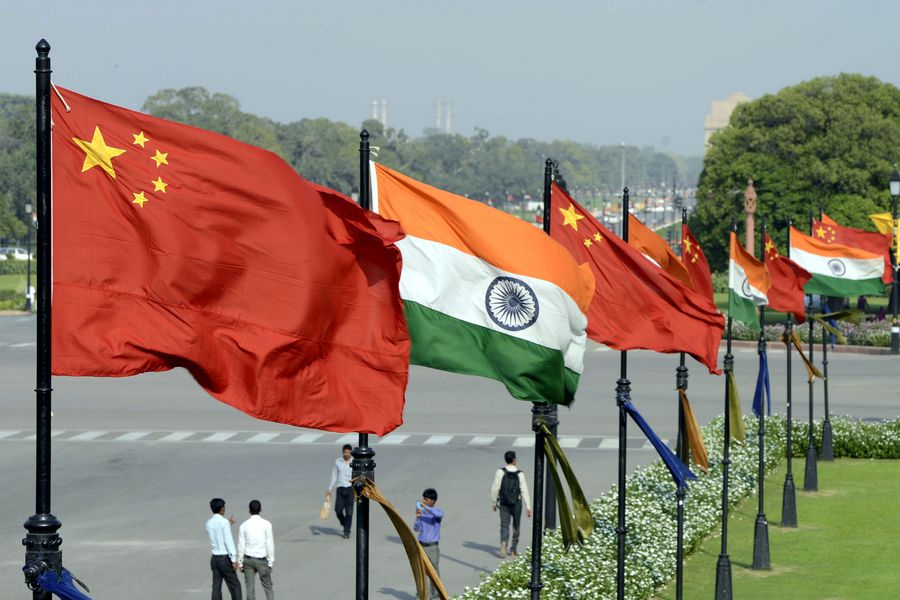Road Ahead: Building New China-India Relations


April 1 of this year marked the 70th anniversary of the establishment of the diplomatic ties between China and India. Over the past seven decades, the relationship between the two countries has witnessed many ups and downs.
In the 1950s, relations between the two countries were so intimate that they behaved like brothers (“Hindi Chini Bhai Bhai”). Unfortunately, the1962 border conflict led to a serious setback in bilateral relations, which didn’t returned to normalization until the late 1980s. The end of the Cold War injected new impetus into the overall improvement and rapid development of the two countries’ relations, which were enriched and upgraded in both content and form. The two countries have carried out comprehensive cooperation and communication in the fields of politics, economics, trade, security, defense and culture and successively set up more than 30 corresponding dialogue mechanisms. More importantly, high-level leaders of the two countries have maintained regular and comprehensive contacts. Notably, the year 2018 witnessed an informal meeting between top leaders of the two countries. This meeting is expected to become a regular strategic communication mechanism. People-to-people exchanges have become more frequent as more Indian students are choosing to study in China and Indian films and cultural products such as yoga are becoming more popular with Chinese consumers.
The simultaneous rise of the economies of China and India since the end of the Cold War has deepened friendship between the two countries. Their relationship now transcends bilateral scope as the duo continue increasing their strategic influence on the global stage. But, if they want to reinforce their relations and construct a framework to maintain stable cooperation, the two countries still have much work to do.
Changing Foundations of China-India Relations
When looking back at the history for guidance on the future of the relations between the two countries, it is critical to realize that the strategic foundation of their relations has seen significant changes. Accordingly, relations between the two countries, based on history, are facing a reshaping moment.
The most obvious change is that both countries have achieved remarkable economic rise and ranked among the leading economies around the world. But meanwhile, development gaps between them have enlarged. In 1978 when China just started its reform and opening up, the two countries’ economic aggregates were similar, with India’s nominal GDP ranking 12th and China’s GDP ranking 11th in the world. In 1991 when India began its economic reform, China’s economic aggregate was 1.4 times higher than that of India, with India’s nominal GDP ranking 17th and China’s GDP still ranking 11th. By 2019, China’s economic aggregate was about five times of that of India. That year, India became the fifth-largest economy after China became the world’s second-largest economy in 2011. If calculated by purchasing power parity (PPP), the economic aggregates of China and India rank first and third, respectively. After Prime Minister Narendra Modi took office, India’s GDP growth rate surpassed that of China slightly for three successive years from 2015 to 2017. But their overall strength gap stands to remain for a long time.
India is not the same as it was in decades past. Relations between China and India will surely be reshaped around this basis. Considering its current strength, India has behaved more like a major country in diplomacy and is pursuing a corresponding status. In foreign affairs, the country has displayed nationalistic trends and a tough-guy stance towards neighboring counties in South Asia as well as the United States and China. The strategic focus of China’s foreign policies has also shifted to its neighboring countries. Such factors have increased their competition for global status and regional influence.
Another great change involves India’s diplomatic philosophy. Traditionally, India had always upheld the principle of “non-alignment.” Even in 2012, some important think tanks in India were proposing a 2.0 version of the non-alignment policy despite the fact that India had deviated from the diplomatic tradition as early as in the period of Indira Gandhi. After Narendra Modi came to power, India declared it would pursue “multi-alignment,” which caused stark changes in its diplomatic behavior highlighted by the establishment of diplomatic relations with Israel and tighter economic connections to East Asian countries. While greatly improving relations with countries in the “U.S. circle of friends,” India has to some degree distanced itself from traditional strategic partners such as Russia. The United States and India are moving towards becoming “natural allies” in defense.
Since Prime Minister Modi took office, interoperability between U.S. and Indian armies has been greatly enhanced. The two countries carry out frequent maritime drills and their armed forces have established a joint drill mechanism. Additionally, the two countries successively signed the Logistics Exchange Memorandum of Agreement (LEMOA) and the Communications Compatibility and Security Agreement (COMCASA). In February 2020, when U.S. President Donald Trump visited India, the two sides promised to sign the Basic Exchange and Cooperation Agreement for Geo-spatial Cooperation (BECA) as soon as possible.
India gradually shifted from “pro-Soviet” under its “non-alignment” policy to “pro-America” and “close to America.” This change was motivated by its enlarging strength gap with China and increasingly closer connection between China and Russia, which resulted in Russia no longer balancing China for India. Furthermore, the foundation of values and cultural identity that once bound China and India has been weakened. In the mid-20th century, China and India supported each other and shared a similar dream of prosperity after independence from colonial rule. Culturally, both China and India are ancient countries with rich civilizations that have nurtured a natural spiritual connection. As memories of colonialism have become more distant, the consensus against colonialism and hegemony that aligned the countries so closely in the past has drifted away. Ideological differences between the two countries are growing.
Building New Relations
Though both the strategic and value foundations for the relations between China and India have changed, the two major developing countries with similar national conditions still share extensive common interests. Thanks to such common interests, relations between the two countries can move forward despite ups and downs.
The biggest common interest between China and India is people’s livelihood. Both countries are dedicated to improving the wellbeing of their peoples. Although both countries have made breakthroughs in economic aggregates, they are still developing countries in terms of per capita wealth and both are endeavoring to achieve long-term economy growth. In the current global context, the common interests of the two countries are greatly expanding. The United States has lost confidence in globalization, labeling it a sort of “poison” and rolling back many of its efforts to support it. But China and India share high convergence on globalization trends. Based on its development experience, China considers globalization the basic condition for its economic miracle. India’s economic rise also happened after the end of the Cold War and has been accelerated by the globalization process. So both China and India continue to advocate and promote globalization. But, the two countries have yet to devise an ideal method to transform their common ground into practical fruits through economic cooperation.
While engaging in practical cooperation, China and India need to properly manage their disagreements and avoid collapsing into conflict. This also meets the common interests of both countries. It is normal for China and India, as neighboring countries, to encounter disputes left by history. But the two sides need to properly manage these old thorny problems and constantly seek new solutions. Only shrinking the list of disputes will ensure their bilateral relations are not disturbed by some incidents. Certainly, the two countries should set standards on getting along. Only when China and India agree that “a close neighbor is better than a distant relative” and “a good neighbor is more precious than gold” will they build substantial strategic trust.
As the two largest developing countries in the world, the only choice for China and India is to choreograph “the dragon and the elephant dancing together,” which aligns with the most fundamental interests of the two countries and their peoples. China and India must learn from the experiences and lessons of the past seven decades since they established diplomatic ties, which will provide an enlightening roadmap for peaceful and stable relations between the two countries as they blaze a trail of win-win cooperation. As China and India pursue national renewal simultaneously, the pair will expertly take rule-based, restrained and careful steps to ensure “the dragon and the elephant dance together.”
The author is a researcher at the Institute of International Studies, Fudan University.
